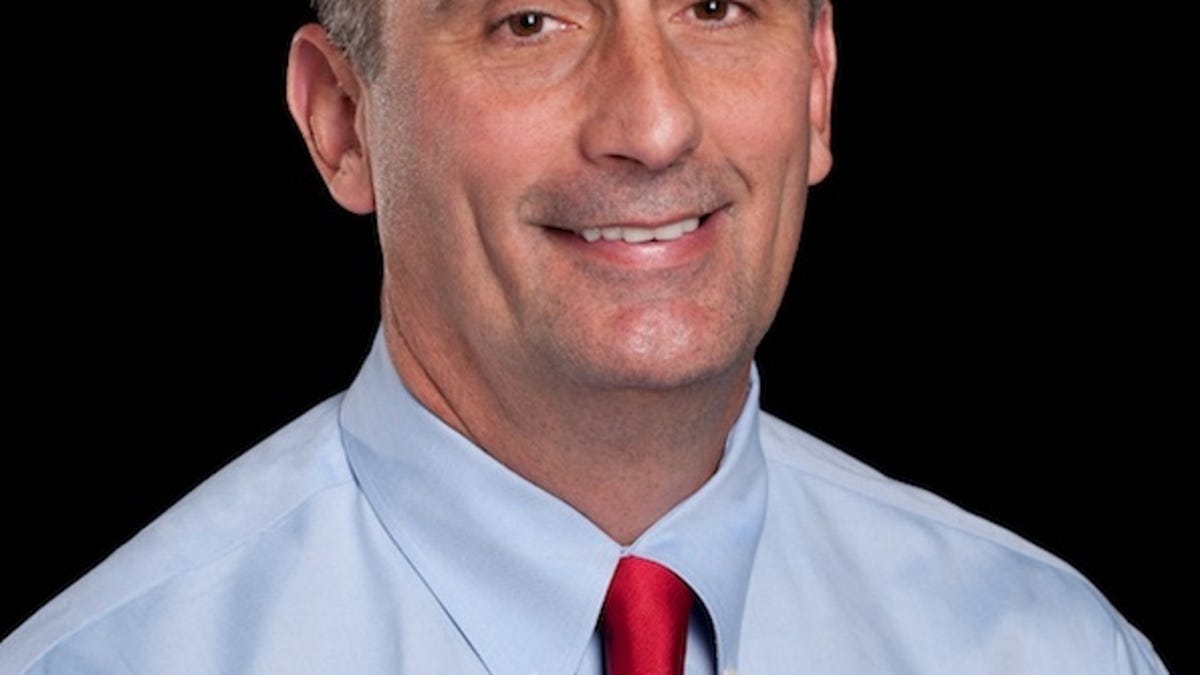Intel CEO takes on Apple A7, cites 'Moore's Law advantage'
Responding to an analyst's question, Intel CEO waxes eloquent about the advantage of Intel's manufacturing technology compared with Apple's.

Intel CEO Brian Krzanich touted the merits of Intel's manufacturing process compared with that of Apple's new 64-bit A7 chip today after the company's earnings report.
During Intel's third-quarter earnings conference call on Tuesday, an analyst questioned Intel about the advantages of going to a 14-nanometer manufacturing process, compared with Apple's 28-nanometer A7 chip.
"[Apple] has been able to show very impressive benchmarks on 28-nanometer silicon," the analyst stated.
Generally, the smaller the chip geometries, the more advanced the chip manufacturing process and thus the faster and/or more power efficient the chip can be. Intel claims that it's jumped well ahead of the rest of the chip industry by moving to a cutting-edge 14-nanometer process first.
Here's what Krzanich said in response to the analyst's comment, citing, among other things, Moore's Law, which states that the number of transistors doubles approximately every two years.
I mean you just kind of used the generic word for benchmarks and there are lot of different ones that are out there. So I am not sure exactly which ones you are talking about. But if you just take a look at our products and all of our products are 64-bit. So we have had that for an extended period of time and products that we are shipping today are already 64-bit.
If you take a look at things like transistor density and you compare, pardon the pun, apples-to-apples and you compare, say, the A7 to our Bay Trail, which is a high density 22 nanometer technology, then our transistor density is higher or more dense than the A7 is. It's a good product...but we do see the Moore's Law advantage from 28 to 22 nanometer as an example, when you compare dense technologies to dense technologies.
The challenge for Intel is that Apple is proving to be a world-class designer of fast-yet-power-efficient smartphone and tablet silicon with its A series of processors, essentially obviating the need for Apple to look to Intel for silicon in those devices.
And Apple is dropping hints that its 64-bit processors may be destined for devices that more directly challenge the traditional laptop PC.
"When Apple announced the iPhone 5S, it called the processor 'desktop-class,' and I don't think that was an accident -- it was sending what we think is a very clear signal that it will converge the iPhone and the MacBook Air," Canonical founder Mark Shuttleworth said recently in an interview, speculating on Apple's plans.
Krzanich also addressed where PC and device makers will use its mainstream Core "Haswell" and tablet-centric Bay Trail Atom chips.
"Most of the tablets we're doing with [hardware] partners are Bay Trail. There are some that are being based on Core [Haswell]. Most of them are being based on the standard Core product. The Haswell Y's are going into fanless systems or extremely low-power 2-in-1s," he said referring to the standard Haswell laptop chips and the more power-efficient Y series Haswell chips.
And Krzanich reiterated that Bay Trail "clamshells," or traditional laptop designs, with touch enabled screens will appear "at $299, which is a new real price point for a touch-enabled devices, so we see it continuing to grow as we enter next year."
Editors' note: This post was originally published on October 15 at 4:27 p.m. PDT, 2013. It has been updated throughout.

